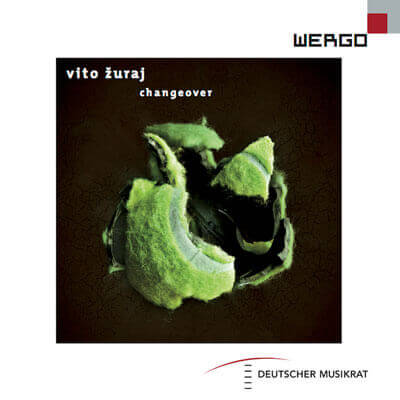HAWK-EYE (2014)
HAWK-EYE (2014)
concerto for French horn and orchestra
solo: cor
orchestra: 2*.2.2*.2*/4.2.2.0/3perc/arp/12.10.8.6.4
duration: 15 minutes
première: February 27, 2014, Cankarjev dom Ljubljana, Slovenia
Slovenian Philharmonic, Saar Berger – French horn
Conducted by Matthias Pintscher
Commissioned by the Slovenian Philharmonic
HAWK-EYE
score preview
HAWK-EYE
(excerpt)
Slovenian Philharmonic, Saar Berger – French horn, Conducted by Matthias Pintscher
Recording published on CD – Changeover by WERGO / Deutscher Musikrat / Edition Zeitgenössische Musik
Recording produced by Radio Slovenia
Additional performances
Konzerthausorchester Berlin
Saar Berger – French horn
Conducted by Simone Young
Slovenian Philharmonic
Saar Berger – French horn
Conducted by TaeJung Lee
BBC Scottish Symphony Orchestra
Saar Berger – French horn
Conducted by Matthias Pintscher
VIDEO
source for composing
source for composing
playing from bar 218 using a stopping mute with an enlarged funnel
playing from bar 218 using a stopping mute with an enlarged funnel
ABOUT
HAWK-EYE is a further instalment in Žuraj’s series of works whose titles draw their inspiration from the sport of tennis. Hawk Eye refers to a form of technology used in many sports to aid umpiring and refereeing decisions. Video footage of the ball’s path is analysed from different angles using complicated algorithms, and a three-dimensional model of the ball’s trajectory generated that can determine where a ball must have landed, even if no conclusive photographic evidence of this can be produced.
A concerto for French horn and symphony orchestra, HAWK-EYE is a single movement stretching over a quarter of an hour. A feature of the orchestral treatment in this work is the division of the strings, with every desk having its own individual part for most of the work. This is not employed to achieve a greater “mass” of sound, but to create minute variations within the single line that emerges as a composite of the players’ individual activity. The result is a paradoxically light and transparent orchestral texture over much of the composition. It opens with a long, string-dominated glissando in contrary motion from the uppermost and nethermost registers of the orchestra. This merges into a sustained multiphonic in the French horn, and there follows a duet between horn and percussion, accompanied by fragile pizzicato glissandi in the strings and harp. The winds join in, providing a sort of harmonic “halo” to the gestures of the solo horn. Indeed, in this opening section, the entire orchestra seems to exist solely to underscore the timbre of the horn in what almost seems a lengthy solo cadenza.
There follows a highly rhythmic, scherzando section in which the horn plays rapid staccato figures using a metal mute. Once this section is over, the glissandi and wind chords return and the horn engages in a series of lyrical phrases with the gentler sound of a cardboard mute. This is the most extended section of the work. The concerto concludes with a long coda, an intimate duet between the soloist and quarter-tone kalimba.
Alwyn Tomas Westbrooke
Changeover (2015)
Published by WERGO
Ensemble Modern, hr‑Sinfonieorchester
Slovenian Philharmonic, Matthias Pintscher, Johannes Kalitzke
recorded pieces (SACD+DVD):
HAWK-EYE, RESTRUNG, CHANGEOVER, RUNAROUND, TOP SPIN



